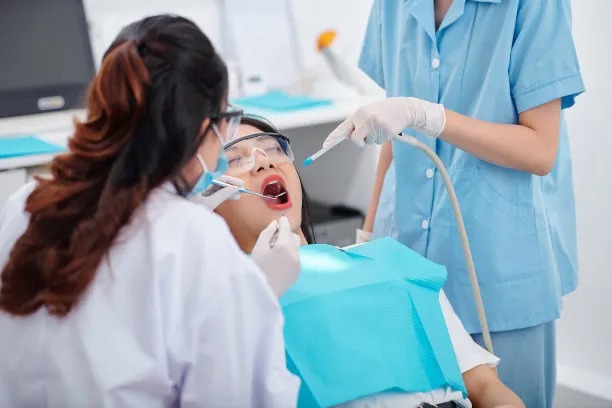Essential Guidelines and Precautions to Ensure Success After Dental Filling Procedures
Summary: Dental filling procedures are an essential aspect of maintaining oral health, providing relief from decay and damage. However, ensuring the success of these fillings requires specific guidelines and precautions post-procedure. This article will delve into four critical areas: pain and discomfort management, dietary adjustments for optimal healing, oral hygiene practices for longevity, and follow-up care and professional advice. By adhering to these essential guidelines, patients can promote successful recovery and prolong the lifespan of their dental fillings, leading to healthier teeth and gums.
1. Managing Pain and Discomfort Efficiently

After undergoing a dental filling procedure, patients may experience some degree of pain or discomfort. This sensation is typically temporary, yet its crucial to handle it properly to ensure a smooth recovery. Over-the-counter analgesics such as ibuprofen or acetaminophen can effectively alleviate pain. However, it is important to follow the prescribed dosage and speak with your dentist if pain persists beyond a few days.
In addition to medication, applying a cold compress to the outside of the cheek can help reduce swelling and numb the area, providing relief from discomfort. Patients should aim to keep the compress on for about 15-20 minutes at a time. It’s vital to avoid placing ice directly on the skin to prevent frostbite.
Patients should also monitor any signs of excessive discomfort or unusual reactions. If the pain escalates or if symptoms occur, such as fever or swelling, its recommended to contact the dental office for advice, as these could signal complications that need professional attention.
2. Making Dietary Adjustments for Healing
Diet plays a significant role in the healing process following a dental filling procedure. It is advisable to stick to a soft diet for at least 24-48 hours post-treatment. Foods such as yogurt, mashed potatoes, and smoothies are excellent choices that wont strain the newly filled tooth. Chewing on hard or sticky substances should be avoided as they may dislodge or damage the filling.
Furthermore, patients should limit their intake of hot foods and beverages for the first couple of days. Sensitivity to temperature may occur after the procedure, and consuming extreme temperatures can cause discomfort or complications. Opting for lukewarm meals can promote a more comfortable healing experience.
Staying hydrated is equally important, but when drinking liquids, patients should be cautious. Using a straw can sometimes apply suction that may disrupt the filling, so it’s better to sip directly from a cup. Overall, making these dietary adjustments can facilitate a quicker and more comfortable recovery.
3. Practicing Good Oral Hygiene Post-Filling
Maintaining good oral hygiene is crucial for prolonging the life of dental fillings and preventing further decay. After a filling, patients should resume their regular oral hygiene routine but with some adjustments. It is essential to wait at least 24 hours before flossing around the filled tooth to give it time to set firmly.
Brushing should continue, but individuals should be gentle around the filled area. Utilizing a soft-bristled toothbrush can help avoid irritation or damage to the filling or surrounding tissues. Furthermore, ensuring that all areas of the mouth are cleaned thoroughly can help eliminate any potential bacteria that could impact healing.
Additionally, using an antibacterial mouthwash may aid in maintaining oral cleanliness and preventing infection around the filling. Balancing proper hygiene with gentle care can significantly enhance the effectiveness and longevity of dental fillings.
4. Importance of Follow-Up Care and Professional Advice
Follow-up appointments with the dentist are essential in monitoring the success of dental filling procedures. These check-ups allow the dentist to assess the filling and make any necessary adjustments. Patients should inquire about the appropriate timeline for follow-up appointments, generally recommended six months after the procedure, or sooner if issues arise.
During these visits, it is crucial for patients to communicate openly about any discomfort or changes they may have experienced. This information can be vital for the dentist in determining the appropriate course of action, whether it’s further treatment or reassurance that everything is healing well.
Lastly, patients should not hesitate to reach out to their dentist with any questions or concerns after the filling procedure. The advice from dental professionals can provide peace of mind and ensure that patients are taking all necessary steps to support their dental health.
Summary:
In summary, achieving success after dental filling procedures involves managing pain effectively, making dietary adjustments, practicing good oral hygiene, and prioritizing follow-up care. Adhering to these guidelines not only facilitates a smoother recovery but also extends the longevity of dental fillings, ensuring optimal oral health.
This article is compiled by Vickong Dental and the content is for reference only.


